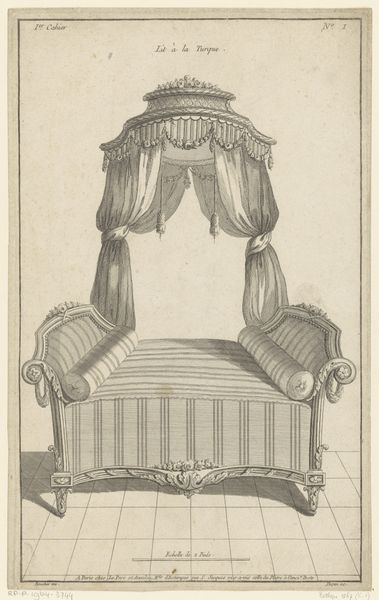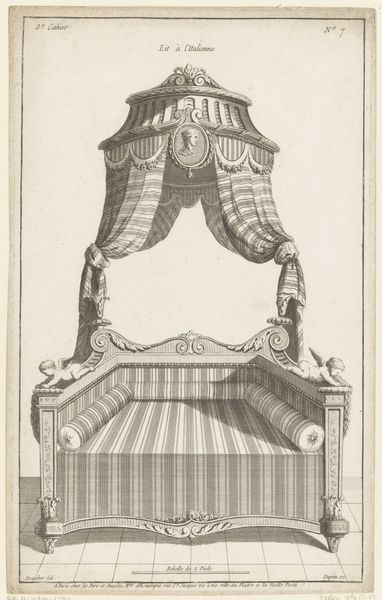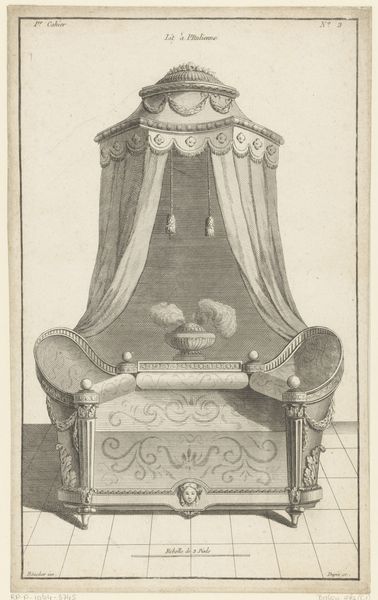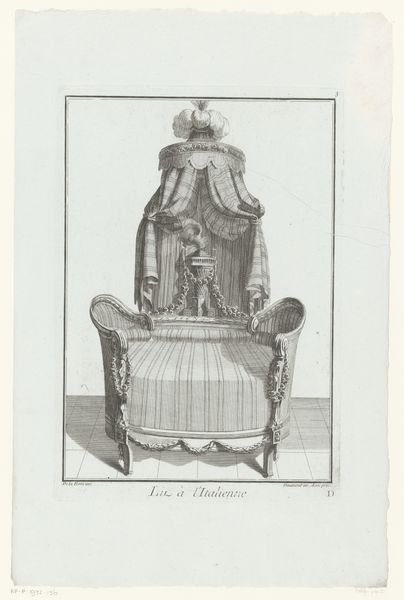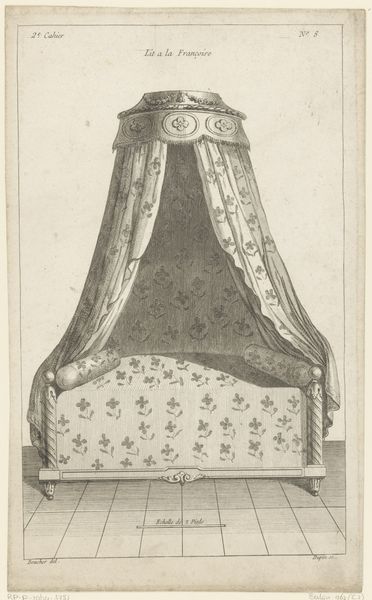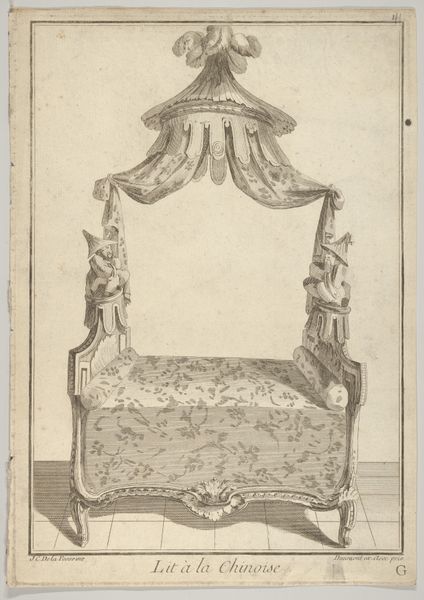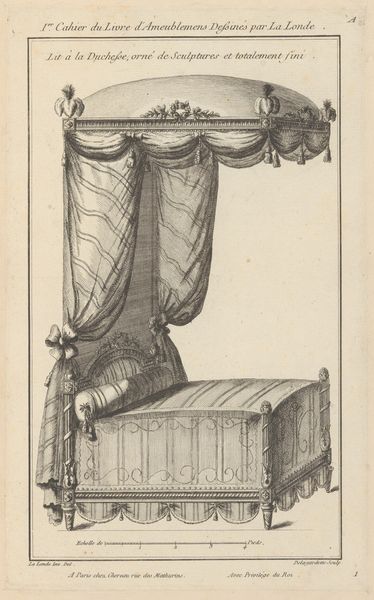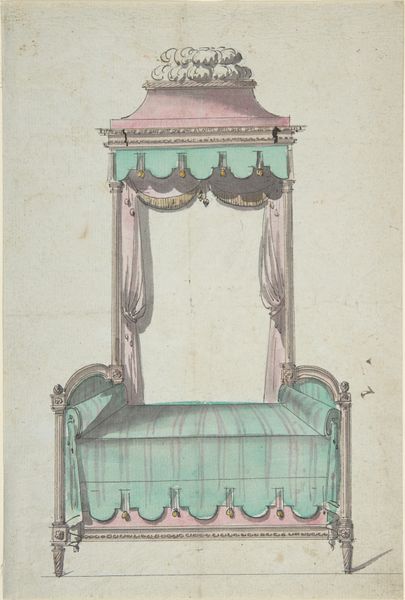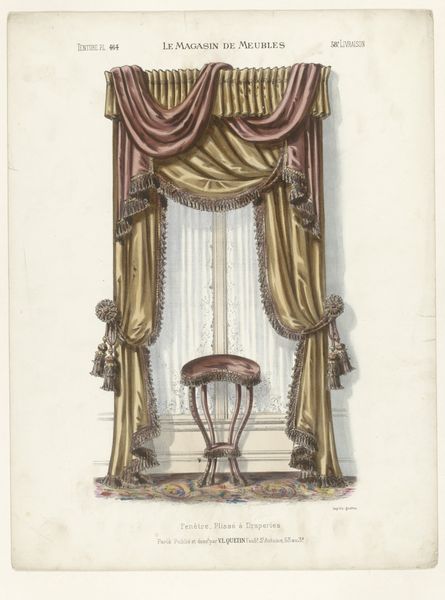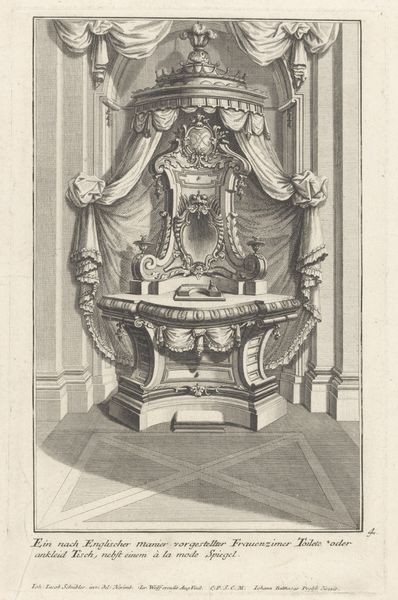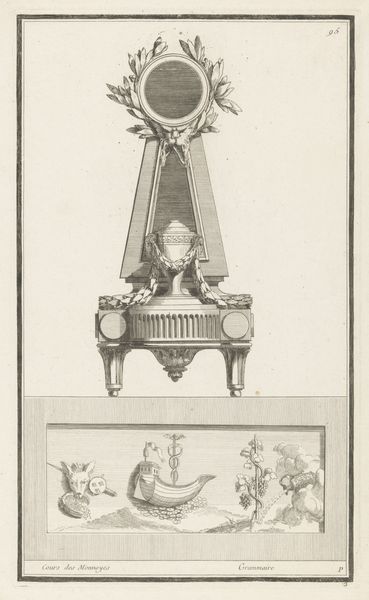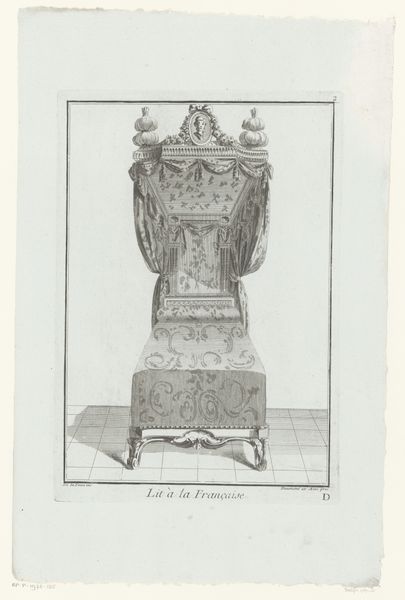
Dimensions: height 329 mm, width 204 mm
Copyright: Rijks Museum: Open Domain
Curator: Look at this fascinating engraving from the late 18th century, dating from around 1772 to 1779. Nicolas Dupin is credited as the creator, and the Rijksmuseum holds it in their collection. The piece is titled "Hemelbed met putti." Editor: Well, my initial impression is of pure indulgence! The attention to detail, the flowing drapery—it’s a vision of luxurious comfort, although rather sterile without color, rendered in such fine lines. Curator: Absolutely, the lines showcase rococo style and are a means to portray such details. It depicts a "Lit à la Chinoise," a French-style bed popular at the time, known for its elaborate canopy, hence all of the textile elements in its composition. Editor: "Chinoise" but the putti, those cherubic figures atop the canopy, they feel distinctly European and full of Christian symbolism regarding paradise. There's also this playful yet overt display of wealth and power. Note the geometric figures, too, how they give way to the style's organic flourish? Curator: Good observation. The very materiality and crafting of such a bed signify access. The finest fabrics, the skilled labor required for carving the ornate frame… its consumption becomes a status symbol, even more pronounced than painted images of the period. Editor: Indeed! The symbols denote wealth and a taste for the exotic, for "elsewhere," yet shaped to fit European aristocratic taste. It speaks to the desire to sleep under an allegorical protection, a cultural narrative spun through imagery. Curator: And to the artisan who crafted the materials, too. The designer and manufacturer understood what these visual shorthands meant and made something useful for commerce that spoke to power and leisure. This drawing documents how this knowledge could also be exported via print. Editor: Seeing Dupin’s fine lines makes me ponder on these dual narratives embedded in what seems merely decorative, both aesthetic desire and the means of artistic output are at play in one image. Curator: I find it equally compelling as a testament to the intricate dance between craft, commerce, and the subtle markers of status in the pre-revolutionary era. A drawing such as this preserves that world for our time.
Comments
No comments
Be the first to comment and join the conversation on the ultimate creative platform.
